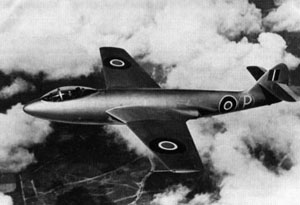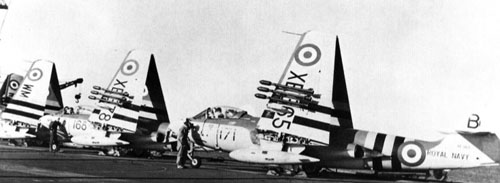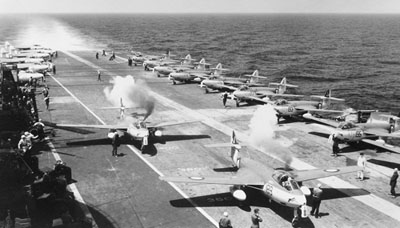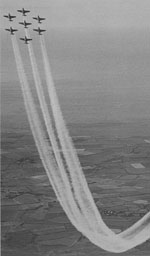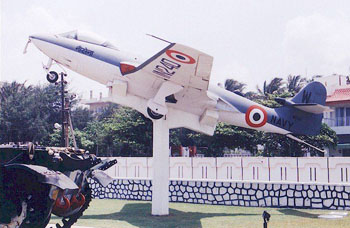 |
||||||
|
||||||
|
|||||||
|
|||||||
| Sea Hawk | |||||||
One of the earliest jet designs, the Hawker Sea Hawk has descended directly from Hawker’s famous line of propeller-driven World War Two aircraft. The Sea Hawk prototype, the P.1040 was basically a modified Hawker Sea Fury. The piston engine was removed and cockpit, nose and nose landing gear were installed in its place. The jet engine was installed in the center of the fuselage. The wings and in particular the tail still show the family resemblance to the Sea Fury. |
|||||||
|
|||||||
Development of the P.1040 started in 1944 and as the war ended, the Royal Air Force’s initial interest in the project faded as they were happy with their Meteors. The design was adapted to match naval deployment as the Naval staff was still interested. Eventually the Royal Navy ordered three prototypes. From there on the design team went two ways: Getting the Sea Hawk ready for service in the Royal Navy and also developing it further to what eventually became the Hawker Hunter which was a huge success, not only with the Royal Air Force. |
|||||||
|
|||||||
| Only 30 Sea Hawks were actually build at Hawker before the production was switched to Armstrong Whitworth. The first two versions of the Sea Hawk were fighters armed with four 20mm guns. The third version and all subsequent ones were fighter bombers, that could be armed with a combination of bombs and rockets additional to the guns. In the Royal Navy, Sea Hawks took part in the military operation of the Suez Crisis, successfully attacking ground targets in Egypt from three British Aircraft carriers. Sea Hawks serving in this Operation can be easily identified by their yellow-and-black stripes, which resemble the famous d-day stripes from World War Two. Britain replaced all Sea Hawks in the late 1950s. |
|||||||
|
|||||||
|
|||||||
India was actually where the Sea Hawk served the longest, with the last ones serving until 1983 to be replaced by Harriers. They served in two major wars against Pakistan in 1965 and 1971 and a number of smaller conflicts. The Sea Hawks held up quite well against more modern Pakistani fighters, taking off both from land bases and India’s only aircraft carrier, the INS Vikrant. |
|||||||
|
|||||||
| wingspan: 15.24m length: 12.1m height: 2.6m (German Sea Hawks 2.9m) empty weight: 4335kg max loaded weight: 7350kg maximum speed: 962km/h range: 770km |
|||||||
| return to top |

